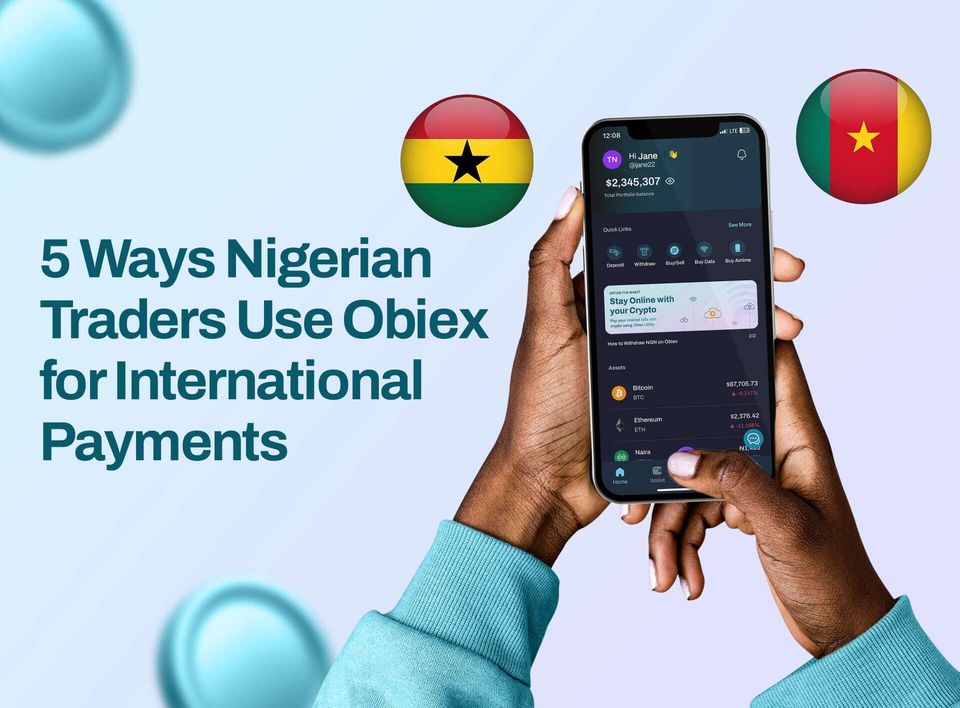What is a Cryptocurrency Whitepaper?
In this article, we will explore what the cryptocurrency whitepaper is, what it contains, and why it matters.

Table of Contents:
- What is a Cryptocurrency Whitepaper?
- What Does a Cryptocurrency Whitepaper Include?
- Whitepaper Key Terms and Their Explanations
- Why Do Whitepapers Matter?
- How to Read a Whitepaper
- How to Write a Whitepaper
- Top Examples of Well-Known Cryptocurrency Whitepapers
- To Recap
- FAQs
Cryptocurrencies have become a hot topic in recent years, with many altcoins being introduced into the market. Now, more than ever, crypto's growing popularity makes it necessary for crypto traders to pay attention to the cryptocurrency whitepaper.
In this article, we will explore what the cryptocurrency whitepaper is, what it contains, and why it matters. We will also walk you through how to read or write one.
What is a Cryptocurrency Whitepaper?
A cryptocurrency whitepaper is an official document that outlines the technical details of a cryptocurrency or blockchain project.
It is typically released by the creators of the project to introduce their idea, explain how it works, and provide evidence that their solution is viable.
A whitepaper serves as both a marketing tool and a technical guide, offering insight into the core components of the cryptocurrency, including its purpose, goals, technology, and the problem it seeks to solve.
Centrally, the whitepaper answers key questions like:
- What problem is this cryptocurrency trying to solve?
- How does the technology work?
- What makes it unique?
- Why should people trust the project?
Whitepapers are vital for investors, developers, and other stakeholders to understand the project's value proposition.
By reading a whitepaper, you can determine whether a cryptocurrency project is worth supporting, whether it has a solid technological foundation, and whether the team behind it is credible.
What Does a Cryptocurrency Whitepaper Include?
1. The Problem Statement:
A whitepaper usually begins with an introduction overviewing the project's purpose and goals. This section often outlines an issue or challenge in finance or technology that the cryptocurrency creators or developers believe needs to be solved. This problem sets the stage for everything that follows.
An example of this kind of problem is a world where people from different countries want to send money to each other quickly and cheaply, but the existing banking system makes it slow and costly. This is the problem that cryptocurrencies like Bitcoin set out to address.
2. The Solution:
Next, the whitepaper introduces the cryptocurrency itself as the solution to the problem. It explains how the new currency will work and why it's a game-changer.
For instance, in the case of Bitcoin, Satoshi Nakamoto's whitepaper introduced the concept of a decentralized, peer-to-peer electronic cash system (that allows people to send money directly to each other), highlighting the need for a digital currency that cuts out the need for banks and their exorbitant fees.
For another example let's say there's a new cryptocurrency called "EcoCoin" that wants to combat climate change. The whitepaper might begin by discussing the environmental issues caused by traditional currencies and why there's a need for a green alternative.
3. Technology and Innovation:
Next, the whitepaper delves into the technology behind the cryptocurrency. Here, you'd expect to find details about the blockchain technology in use, consensus mechanisms (like proof of work or proof of stake), and any innovative features that set this coin apart.
For EcoCoin, the whitepaper might discuss how it uses a unique energy-efficient blockchain to minimize its carbon footprint (A carbon footprint is the total amount of greenhouse gases (including carbon dioxide and methane) that are generated by our actions, and reducing it can heal the environment, reduce health risks, and improve local economies).
4. Tokenomics:
Cryptocurrencies often have their own unique tokens, like Bitcoin's BTC or Ethereum's ETH. The whitepaper explains how these tokens are created, distributed, and used within the network. This is where things get exciting for investors. The whitepaper describes how the company distributes cryptocurrency, makes coins, and whether there's a cap on the total supply.
5. Use Cases and Benefits:
The whitepaper also discusses how to use cryptocurrency and its advantages in real life. This might include faster transactions, lower fees, or improved security. For example, Bitcoin can buy goods and services online like traditional money. But it's borderless, meaning you can send it to anyone, anywhere, without dealing with exchange rates or international fees.
6. Team and Advisors:
People want to know who's behind a cryptocurrency project. The whitepaper typically introduces the team members, their qualifications, and any notable advisors. Investors are likelier to trust a project with experienced professionals steering the ship.
7. Roadmap:
Just as a GPS helps you navigate, the whitepaper includes a roadmap outlining the project's plans and milestones. Going back to our Ecocoin example, this might involve expanding partnerships with eco-friendly businesses, launching a mobile app, or getting listed on major cryptocurrency exchanges.

8. Legal and Compliance:
Cryptocurrencies operate in a legal landscape that varies from country to country. The whitepaper also touches on the legal aspects, including compliance with regulations. If EcoCoin plans to operate in multiple countries, it must outline how it will adhere to each region's laws.
9. Security:
Security is paramount in cryptocurrency, given the risks of hacking and fraud. The whitepaper discusses the security measures to protect users' funds and data.
For instance, EcoCoin might use advanced encryption techniques (the process of protecting information or data by using mathematical models to scramble it so that only parties with the key to unscramble it can access it) and undergo regular security audits.
10. Community and Governance:
Many cryptocurrencies involve their communities in decision-making processes. The whitepaper might also describe how EcoCoin holders can participate in governance, vote on proposals, and shape the cryptocurrency's future.
11. Conclusion and Call-to-Action:
Just like any well-written document, the whitepaper wraps up by summarizing the key points and encouraging readers to get involved with cryptocurrency. This might encourage readers to join the project's community, invest in the initial coin offering (ICO), or stay updated on its progress.
For example, the Bitcoin whitepaper concludes by stating that Bitcoin is an idea whose time has come and invites people to join the movement to create a new financial system.
In a nutshell, a cryptocurrency whitepaper is like a user manual for a new digital currency. It explains the currency, why it's needed, how it works, and how you can be a part of it.
Whitepaper Key Terms and Their Explanations
Whitepapers are often filled with technical jargon and complex concepts, but fear not! We'll simplify some of the key terms you might encounter:
- Blockchain: This is like a digital ledger that records all transactions made with the cryptocurrency. It's public and can't be tampered with, making it secure.
- Decentralisation: Imagine a group project where everyone has a say, and no single person controls everything. That's what decentralization means in crypto. It's about spreading power and decision-making.
- Consensus Mechanism: This is how everyone in the cryptocurrency network agrees on valid transactions. Think of it as the rules of the game that everyone follows.
- Mining: This is the process where people use powerful computers to verify transactions on the blockchain. In return, they get rewarded with new cryptocurrency coins.
Why Do Whitepapers Matter?
Whitepapers are crucial because they:
- Explain the Idea: They explain the cryptocurrency concept in simple terms. For example, if you invented a new coin that makes it super easy to send money across borders, your whitepaper would explain how it does that.
- Build Trust: Investors and users need to trust the creators of a cryptocurrency. A well-written whitepaper can show that the creators have a solid plan and understand what they're doing.
- Attract Investors: People who like your idea might want to invest in cryptocurrency. A whitepaper helps them understand why it's a good investment.
How to Read a Whitepaper
1. Start with the Introduction:
The introduction usually explains the problem the cryptocurrency is trying to solve and why it’s needed.
It’s important to understand the project's purpose right away.
For example, Bitcoin was introduced to solve the problem of decentralised, peer-to-peer transactions without intermediaries.
2. Look for the Technical Details:
The technical section explains how the cryptocurrency works, including its blockchain technology, consensus mechanism, and security features.
If you’re new to crypto, this might feel complex, but focus on understanding the core idea.
Is it using proof-of-work, like Bitcoin, or proof-of-stake, like Ethereum 2.0?
This helps you gauge the project’s strength.
3. Check the Tokenomics:
Tokenomics refers to how the cryptocurrency is distributed and its economic model.
How many coins or tokens will be available? Are they already mined, or will they be mined over time?
Understanding tokenomics helps you know how the project plans to incentivise users and ensure its growth.
4. Understand the Roadmap:
Most whitepapers will include a roadmap, showing the project's timeline for development.
This gives you an idea of how far along the project is and what goals are planned for the future.
Pay attention to the milestones—if they’re achievable, the project is likely more realistic.
5. Read About the Team:
The whitepaper should also introduce the team behind the project.
Look for credible backgrounds.
Do they have experience in blockchain or cryptocurrency?
A solid team can make a big difference in the project's success.
6. Evaluate the Community:
A good cryptocurrency often has a strong community.
Some whitepapers include information about their community involvement, partnerships, or other projects.
A large, active community can signal strong support for the project.
How to Write a Whitepaper

1. Start with an Introduction:
The first section should introduce the project.
Explain what the cryptocurrency or blockchain is about, the problem it aims to solve, and why it’s important.
This is where you grab the reader’s attention and set the stage for what’s to come.
2. Define the Problem:
Clearly state the problem or challenge that your project is addressing.
Be specific and use examples if possible.
This helps readers understand the relevance of your project.
3. Present the Solution:
After outlining the problem, introduce your solution.
Explain how your cryptocurrency or blockchain will solve the problem, and highlight any unique features or technology it uses.
Make sure to explain the technology in simple terms, avoiding technical jargon as much as possible.
4. Describe the Technology:
In this section, dive deeper into the technology behind your project.
Describe how it works and why it is innovative.
Don’t be afraid to use simple analogies to help readers understand the technical aspects.
5. Outline the Tokenomics:
Tokenomics refers to how the cryptocurrency operates in terms of supply, demand, and incentives.
You should explain how tokens will be distributed, what their purpose is, and how users can earn or use them.
This section should be clear and concise.
6. Explain the Roadmap:
A good whitepaper includes a timeline of the project’s development.
This is where you outline the major milestones and when you expect to achieve them.
Readers want to know what the next steps are, so make sure to keep this section realistic and easy to follow.
7. Address Security and Privacy:
It’s important to reassure your audience that the project is secure.
Talk about how user data is protected and what measures are in place to prevent fraud or hacking.
Clear, simple language is key here to build trust.
8. Conclude with a Call to Action:
End your whitepaper with a clear call to action.
This could be an invitation to join your project’s community, invest, or simply stay informed.
Let your readers know how they can get involved.
Top Examples of Well-Known Cryptocurrency Whitepapers
1. Bitcoin (BTC):
Bitcoin’s whitepaper, titled Bitcoin: A Peer-to-Peer Electronic Cash System, was written by an unknown person (or group) under the name Satoshi Nakamoto in 2008.
This whitepaper introduced the concept of a decentralised digital currency that could allow people to send money over the internet without needing a trusted third party, like a bank.
Bitcoin’s whitepaper was groundbreaking, offering a solution to double-spending and enabling secure transactions using blockchain technology.
2. Ethereum (ETH):
Ethereum's whitepaper, written by Vitalik Buterin in 2013, proposed a blockchain that could support decentralised applications (DApps) beyond just cryptocurrency.
Ethereum's whitepaper introduced the concept of "smart contracts," which are self-executing contracts with the terms directly written into code.
This concept has since powered thousands of DApps and decentralised finance (DeFi) platforms.
3. Litecoin (LTC):
Litecoin's whitepaper, created by Charlie Lee in 2011, describes a peer-to-peer cryptocurrency inspired by Bitcoin but designed to offer faster transaction speeds and lower fees.
Litecoin’s whitepaper focuses on providing an alternative to Bitcoin with improved efficiency, making it easier for everyday transactions.
4. Ripple (XRP):
Ripple's whitepaper outlines a protocol and digital currency that aims to facilitate fast, low-cost international payments.
Created by Ripple Labs, the whitepaper introduced a unique consensus algorithm instead of proof-of-work or proof-of-stake, allowing Ripple to settle transactions more quickly.
Ripple is focused on improving cross-border payments between banks and financial institutions.
5. Cardano (ADA):
Cardano's whitepaper, created by Charles Hoskinson, focuses on creating a scalable and sustainable blockchain that can support the development of smart contracts and decentralised applications.
The paper emphasises a scientific, research-driven approach to blockchain development, aiming to provide a secure and energy-efficient alternative to existing systems.
To Recap
- Cryptocurrencies can seem complex and daunting, but the whitepaper is the key to unlocking their potential. The document lays out the vision and mechanics behind these digital currencies.
- So, next time you come across a new cryptocurrency, don't forget to check out its whitepaper – it might just be your roadmap to the future of finance.
FAQs
Q1. What is a cryptocurrency whitepaper?
A cryptocurrency whitepaper is a document that outlines the details of a cryptocurrency or blockchain project, explaining its purpose, technology, and how it works.
Q2. Why do I need to read a whitepaper?
Reading a whitepaper helps you understand a cryptocurrency project before deciding to invest in it or use it. It provides insights into the project's goals, technology, and team.
Q3. What should I look for in a cryptocurrency whitepaper?
Look for a clear explanation of the problem the cryptocurrency solves, its technology, tokenomics, the roadmap, and the team behind the project.
Q4. Can anyone write a whitepaper?
Yes, anyone with a good idea and technical know-how can write a whitepaper. However, the quality and credibility of the whitepaper depend on the author’s knowledge and expertise.
Q5. Are whitepapers always reliable?
Not always. While many whitepapers are legitimate, some may be poorly written or overly optimistic. Always research the project and the team before investing.
Q6. What is tokenomics?
Tokenomics refers to the economic model of a cryptocurrency, including how tokens are distributed, used, and their total supply.
Q7. What is the importance of a roadmap in a whitepaper?
The roadmap provides a timeline of key milestones, giving investors a clear idea of the project's development stages and future plans.
Q8. How do I know if a whitepaper is legitimate?
Look for transparency, clear technical explanations, and a solid team behind the project. If the whitepaper lacks detail or has vague claims, it may not be trustworthy.
Q9. What is the technical part of a whitepaper?
The technical part explains how the cryptocurrency’s blockchain works, including details about consensus mechanisms, security features, and scalability.
Q10. Do all cryptocurrency projects have whitepapers?
Most legitimate cryptocurrency projects have whitepapers, but some smaller or less serious projects may not. Always be cautious if a project doesn’t provide a whitepaper.
Disclaimer: This article was written to provide guidance and understanding. It is not an exhaustive article and should not be taken as financial advice. Obiex will not be held liable for your investment decisions.




